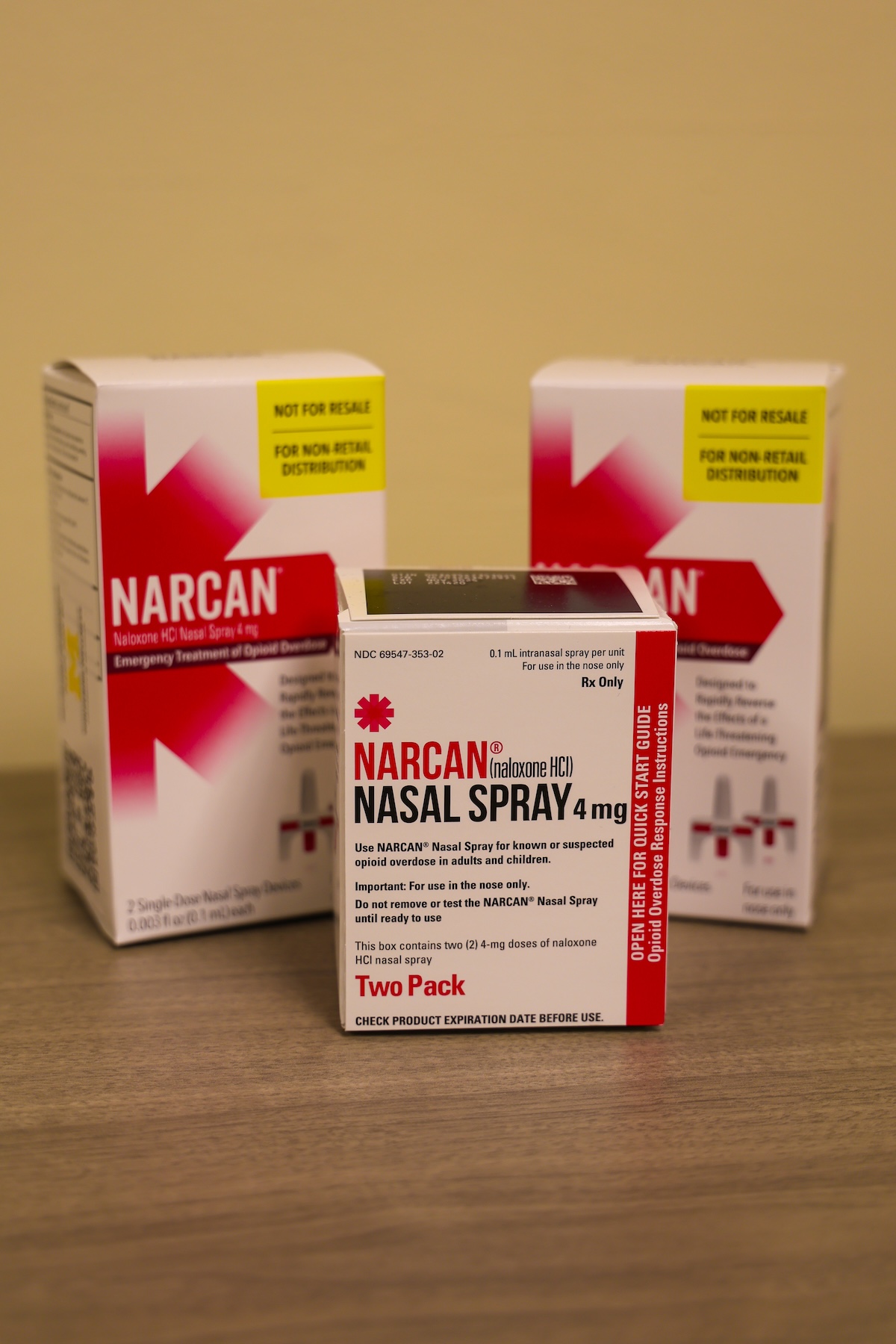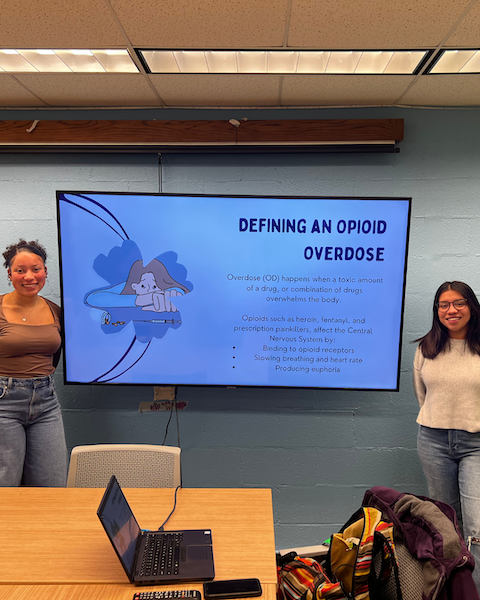Most U-M students do not use hallucinogens, methamphetamines, opioids, stimulants, or other drugs. With substances like fentanyl getting mixed with other drugs, often without the user knowing about it, it's important to know how to identify and respond to an opioid overdose. Just in case.
What is fentanyl?
Fentanyl is a synthetic opioid that is sometimes used for pain management in cancer treatment. It is now being found in drugs, including heroin, cocaine, counterfeit Xanax, and ecstasy. Even a small amount of Fentanyl could cause an overdose.
Signs of an opioid overdose
Recognizing the signs of an opioid overdose could save a life. If you notice any of these signs in someone call 911 immediately and administer naloxone.
- Breathing — Irregular, slow, shallow, or no breathing. You could also hear snoring, choking, or gurgling sounds.
- Lips — Someone with light skin will have blue or purplish lips and fingernails. Someone with dark skin will have ashen gray lips and fingernails. Their skin might also be clammy.
- Unresponsive — The person is unconscious or doesn't respond when you shout their name, shake their shoulders, or give them a sternal rub. They might be awake but unable to talk. Their body could be very limp, and you might notice that their pulse is slow, erratic, or not there at all.
- Eyes — Small, pinpoint pupils.
What is naloxone?
Naloxone (brand name Narcan) is a medication used to rapidly reverse an opioid overdose, which can cause a person to stop breathing. Naloxone quickly blocks the effects of opioids, reversing the overdose and potentially saving the person's life. It can be given to a person via nasal spray or an injection. Most of the naloxone available on campus is the nasal spray.
Anyone can administer Narcan when a person is experiencing an overdose. No special medical training is needed.
Naloxone won't harm someone if they're not experiencing an opioid overdose. It's always best to use it if you think someone is experiencing an opioid overdose.
How do I use naloxone?
Naloxone works quickly (within 5 minutes) and lasts roughly 120 minutes. This means someone can fall back into an overdose after the naloxone wears off if the individual does not get medical help. There are many laws in place that help protect "good samaritans" for administering naloxone and helping in situations of overdose, including Medical Amnesty.
- CALL 911.
- Take the nasal spray out of the box (do NOT do a test spray, there is a limited amount of spray in the device).
- Tilt the person's head back while holding the nozzle between your fingers.
- Press the plunger.
- If the person does not respond in 2 minutes, administer a second dose.
- Roll the person into the Recovery Position — onto their side with their head supported.
- Stay with the person until help arrives.
- It is important to note that the side effects of naloxone can mimic withdrawal. Some individuals may experience disorientation, nausea/vomiting, agitation, or more. One more reason you should call emergency services.
Where can I get naloxone?
You can get naloxone, for free, locally at:
- Wolverine Wellness
University Health Service - 207 Fletcher, Suite 0245
Monday — Friday, 9 a.m. to 4:30 p.m.
- Health & Wellness Vending Machines
Multiple locations on campus
- Ann Arbor Public Library
Downtown Branch
10 a.m. to 8 p.m.
Many local pharmacies sell Narcan over the counter.
Want to get involved in this campaign?
Request Print & Digital Materials
Share our materials with your school or organization. You can also share ideas for future campaigns or sign up to participate in upcoming focus groups to test out new ideas through our request form!
Interested in continuing the conversation?
Sign up for wellness coaching!
Planning a program, workshop, or training? We offer virtual and in-person programming. Request a consultation or program or check out the Well-being Toolkit for more resources.
What’s too much?
Check out these resources to help you explore your relationship with alcohol and other drugs.

An example of the naloxone you can pick up for free in our office during business hours, or in one of the health & wellness vending machines on campus.

Wolverine Wellness graduate students giving an in-service presentation on opioids.
